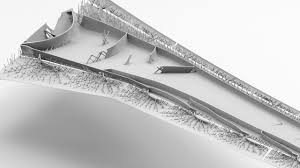
Breaking News
6.5x55 Swedish vs. 6.5 Creedmoor: The New 6.5mm Hotness
Best 7mm PRC Ammo: Hunting and Long-Distance Target Shooting
 Christmas Truce of 1914, World War I - For Sharing, For Peace
Christmas Truce of 1914, World War I - For Sharing, For Peace
Top Tech News
 EngineAI T800: Born to Disrupt! #EngineAI #robotics #newtechnology #newproduct
EngineAI T800: Born to Disrupt! #EngineAI #robotics #newtechnology #newproduct
 This Silicon Anode Breakthrough Could Mark A Turning Point For EV Batteries [Update]
This Silicon Anode Breakthrough Could Mark A Turning Point For EV Batteries [Update]
 Travel gadget promises to dry and iron your clothes – totally hands-free
Travel gadget promises to dry and iron your clothes – totally hands-free
 Perfect Aircrete, Kitchen Ingredients.
Perfect Aircrete, Kitchen Ingredients.
 Futuristic pixel-raising display lets you feel what's onscreen
Futuristic pixel-raising display lets you feel what's onscreen
 Cutting-Edge Facility Generates Pure Water and Hydrogen Fuel from Seawater for Mere Pennies
Cutting-Edge Facility Generates Pure Water and Hydrogen Fuel from Seawater for Mere Pennies
 This tiny dev board is packed with features for ambitious makers
This tiny dev board is packed with features for ambitious makers
 Scientists Discover Gel to Regrow Tooth Enamel
Scientists Discover Gel to Regrow Tooth Enamel
 Vitamin C and Dandelion Root Killing Cancer Cells -- as Former CDC Director Calls for COVID-19...
Vitamin C and Dandelion Root Killing Cancer Cells -- as Former CDC Director Calls for COVID-19...
 Galactic Brain: US firm plans space-based data centers, power grid to challenge China
Galactic Brain: US firm plans space-based data centers, power grid to challenge China
Watch a supercomputer design a radical new wing for airplanes

Using a tool called topology optimization, they enlist computers to snip as much material as possible from the inside of objects, reducing the number of spokes on a bicycle wheel, for example. But current methods can only optimize simple objects such as brackets and pipes. Now, a team of researchers says it has created a new method of paring down large-scale objects. The trick is resolution. Three-dimensional images are measured in voxels, a bit like computer images that are measured in pixels. In the past, the resolution of optimized 3D models was limited to 5 million voxels, but the new program—reported today in Nature—can optimize objects up to 1 billion voxels in size. The engineers put the system through its paces by feeding it the wing dimensions from a Boeing 777 airliner. A supercomputer crunched the numbers for 5 days and produced a new design: a wing with a radical internal structure that is kept solid through curved wing spars and diagonal ribs, instead of the gridlike internal ribbing present in standard airplane wings. The new, more hollow wing weighs 5% less than the wings currently in use on the 777, which could save 200 metric tons of fuel per year. Because of its incredibly complicated design, the wing is currently unfeasible for manufacturing. But in the future, new methods of 3D printing could allow engineers to build similar extreme wing designs.

 The State's Last Stand
The State's Last Stand


